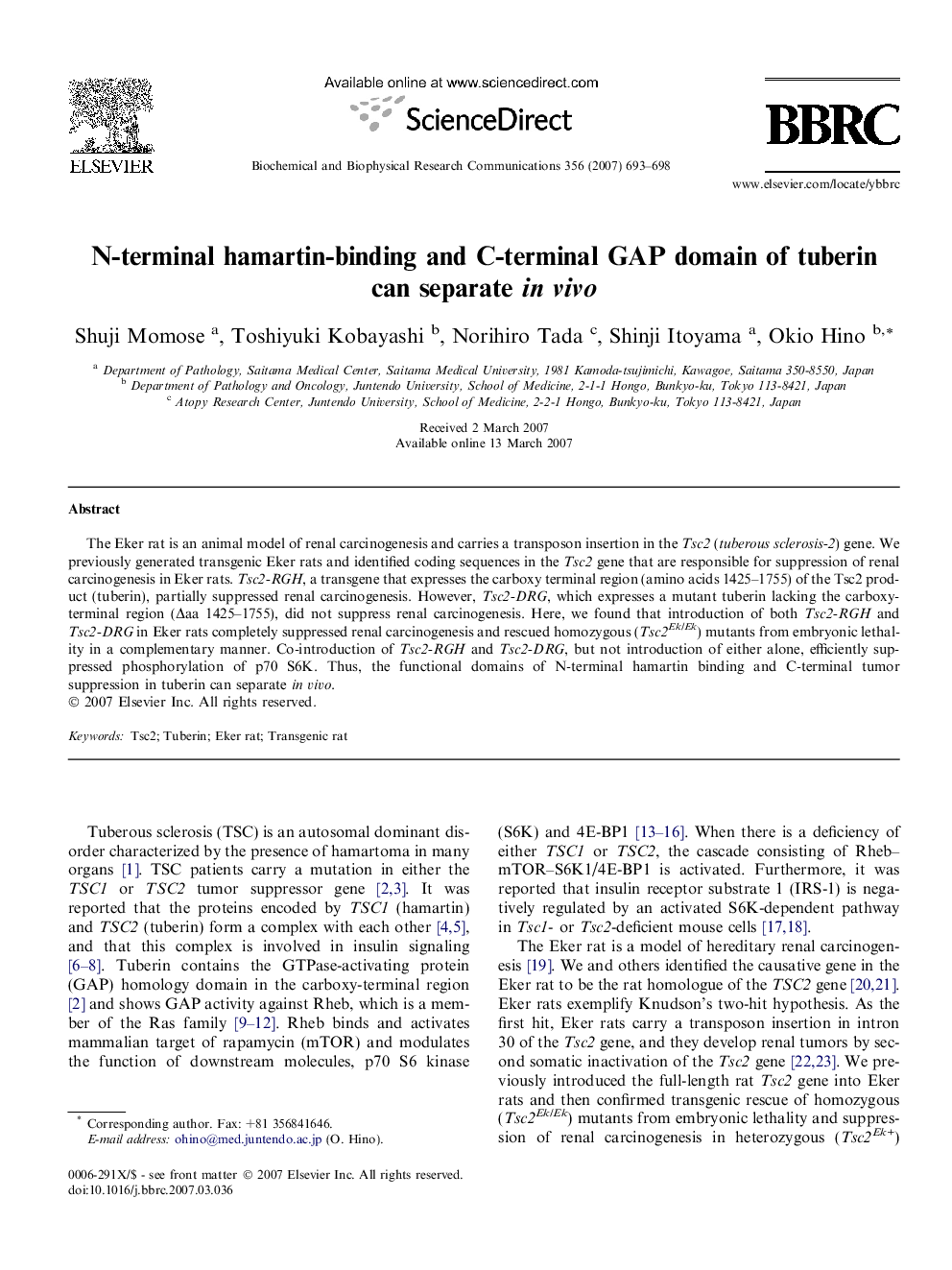| Article ID | Journal | Published Year | Pages | File Type |
|---|---|---|---|---|
| 1937866 | Biochemical and Biophysical Research Communications | 2007 | 6 Pages |
Abstract
The Eker rat is an animal model of renal carcinogenesis and carries a transposon insertion in the Tsc2 (tuberous sclerosis-2) gene. We previously generated transgenic Eker rats and identified coding sequences in the Tsc2 gene that are responsible for suppression of renal carcinogenesis in Eker rats. Tsc2-RGH, a transgene that expresses the carboxy terminal region (amino acids 1425-1755) of the Tsc2 product (tuberin), partially suppressed renal carcinogenesis. However, Tsc2-DRG, which expresses a mutant tuberin lacking the carboxy-terminal region (Îaa 1425-1755), did not suppress renal carcinogenesis. Here, we found that introduction of both Tsc2-RGH and Tsc2-DRG in Eker rats completely suppressed renal carcinogenesis and rescued homozygous (Tsc2Ek/Ek) mutants from embryonic lethality in a complementary manner. Co-introduction of Tsc2-RGH and Tsc2-DRG, but not introduction of either alone, efficiently suppressed phosphorylation of p70 S6K. Thus, the functional domains of N-terminal hamartin binding and C-terminal tumor suppression in tuberin can separate in vivo.
Keywords
Related Topics
Life Sciences
Biochemistry, Genetics and Molecular Biology
Biochemistry
Authors
Shuji Momose, Toshiyuki Kobayashi, Norihiro Tada, Shinji Itoyama, Okio Hino,
